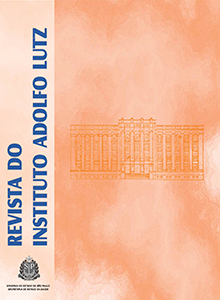Viability of Campylobacter jejuni in the refrigerated samples of artificially contaminated pasteurized and UHT milks
Keywords:
Campylobacter jejuni, milk, experimental contamination, viability, low temperature
Abstract
Campylobacter is the most prevalent etiologic agent of foodborne gastroenteritis worldwide. Although raw milk is an important source of infection, little is known about the consequences of milk recontamination. This study aimed at verifying the viability of Campylobacter jejuni in pasteurized and UHT milks stored under refrigeration. Both samples were divided into five portions of 100 mL, inoculated with 101 CFU.mL-1 of C. jejuni and stored at 4 °C - 7 ºC for 48 h. The procedure was repeated using inoculations of 102, 103 and 104 CFU.mL-1. Aliquots were analyzed immediately after inoculation and after 24 and 48 h to evaluate C. jejuni viability. The microorganism their viability in all of samples. In pasteurized milk a reduction of 1 log cycle occurred after 24 h and low counts after 48 h. Probably, the reduction happened due to the occurrence of microbiota in this milk, which caused competition or inhibition of microorganism growth. UHT milk offered good conditions for bacteria survival in all of the periods. The consumption of contaminated milk, even stored under refrigeration might be a source of infection. Microorganism were more viable in UHT milk than in pasteurized one, probably owing to the absence of competing microorganisms.
Published
2016-05-05
How to Cite
Monteiro, G. P., Melo, R. T. de, Nalevaiko, P. C., Mendonça, E. P., Fonseca, B. B., & Rossi, D. A. (2016). Viability of Campylobacter jejuni in the refrigerated samples of artificially contaminated pasteurized and UHT milks. Revista Do Instituto Adolfo Lutz, 74(3), 280-285. Retrieved from https://periodicoshomolog.saude.sp.gov.br/index.php/RIAL/article/view/33482
Issue
Section
BRIEF COMMUNICATION










